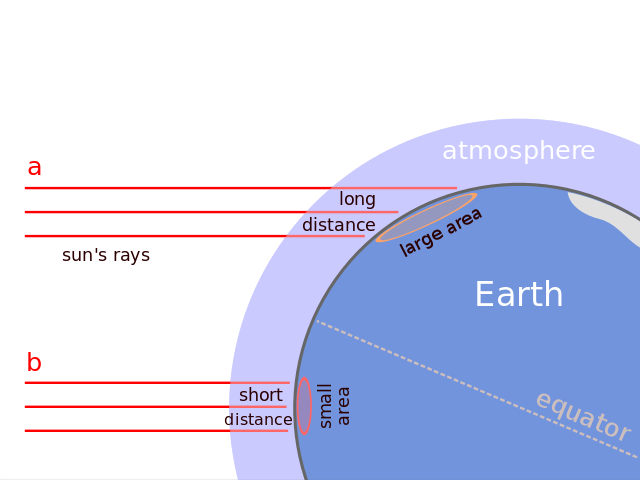Sun angle
amount of heat energy received at any location on the globe affecting climate From Wikipedia, the free encyclopedia
Sun angle is the angle of incidence at which sunlight strikes the Earth at a particular time and place. In most places the Sun rises in the morning, is highest at noon, and sets in the evening. In different seasons the Sun is farther north or south. The angle controls the amount of heat energy received at this place, so summer days are usually warmer than winter nights.

Seasonal change in the angle of sunlight, caused by the tilt of the Earth's axis, is the basic mechanism that results both in warmth of the weather and in length of the day.[1]
Related pages
Notes
Wikiwand - on
Seamless Wikipedia browsing. On steroids.
